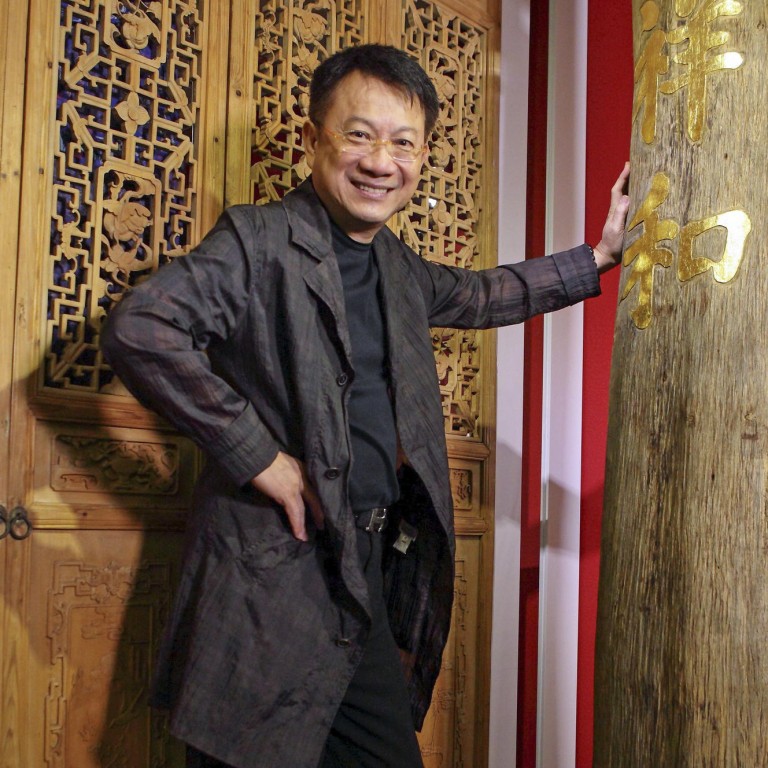
My life: Paul Kan Man-lok
The Chinese-language telecoms pioneer tells Jo Baker about his passion for collecting - and sharing -treasures
They call me the father of Chinese multilingual radio transmission. I was the one who came up with a system on how to transmit Chinese language properly through radio waves, although everyone had said it couldn't be done. Back in the 1960s, when everything was numeric, we had to write (computer) programmes in 0s and 1s … But many languages like Chinese couldn't be transmitted through a computer - they could only use special codes that had to be converted slowly using a dictionary. I own the patent for the system, but I just let people use it to speed up its adoption by the world. Its application has extended from Chinese characters to Thai, Russian and other non-Roman languages. Some awards I received, such as the CBE (Commander of the Order of the British Empire), were partly because of this and the impact this has had on the livelihoods of Chinese people around the world. But now, at my age, I prefer doing the things I never found time for: charity work, cultural endeavours and educational efforts through exhibitions.
When I was young, in Hong Kong, we had a lot of collectors' items at home because, as traders, my grandparents and my father would keep a good piece when they saw one. It's common for a Chinese family to display a collection such as porcelain or jade in their living room. Of course, they always told me not to touch things - I could always look at them but not touch. When I grew up and could afford to finally, I bought my own pieces, so I could touch them as much as I wanted to.
I have business in 50 countries. Whenever I visit them, I go to the local flea markets, get to know the agents and put the word out about what I like. Apart from jade and jadeite - which have gone up so much now in price - I collect rare books and maps of China, which were once only allowed to be kept by the emperor. I have a copy of the first atlas in the world, from around the year 1500, which I bought for HK$1.45 million. The map trader is now trying to buy it back from me … it's worth over HK$10 million. Collecting, in addition to being a hobby, is a way to build up your wealth slowly, rather than buying a property, where you have to commit a large sum. Don't be afraid of making mistakes, you'll learn by trial and error. If you just buy pieces that you love, mistakes won't matter so much.
If you want to collect something as an investor, you should collect something rare. I've tried wine, but the cork will cause problems as it wears out. If you buy gold, new mines continue to be discovered; porcelain and paintings continue to be made; but agarwood is something people burn for incense and consume as medicine. Good-quality resin is developed over 500 or 1,000 years and most of the trees have been chopped down. So this is one of the few things with a limited supply, that is becoming much more precious. Agarwood is burned in all places of serious worship around the world, from Kyoto to Saudi Arabia - and carved into beads and Buddha statues. Legend has it that when foreign ships first started sailing into Hong Kong harbour they could smell the agarwood incense burning, and that's why they called it Fragrant Harbour. So for me, as a home-grown entrepreneur, it is something of rare significance.
When I start to collect something, I read all the books I can get hold of. I find the process of agarwood formation - how the antibodies form - totally fascinating. So I've accumulated quite some knowledge, and the traders will come to me for information. I tell them to sign up to our Institute of Agarwood, where we offer introductory and appreciation courses. But I also want to spread awareness. Smugglers cut down young trees, so very few trees ever make it to old age, when the resin will be really potent and valuable. There's a lot of dud wood floating around … all the oldest trees are gone. My hope is to raise awareness: these trees need to grow to an old age and be farmed on a sustainable basis. Why not grow plantations in Hong Kong for the next generations? This is something valuable, beautiful, that can be applied as medicine - and above all, is close to the heritage of Hong Kong. We should treasure it.
I want to set an example for others who have collected a lot of wealth and artefacts. Rather than put them in a bank, they should do something, help educate the younger generation, because we're losing our history. I've donated my collections to charities I set up, so one day, when I'm not around, the collections will remain. Apart from sponsoring exhibitions and supporting art endeavours such as Art in the Park for children, we encourage participation in community initiatives. For me it's an opportunity to help retain the old world - not just the hardware, but the spirit. I feel people just look at money and that's all that matters. But we need to celebrate creativity, compassion and the artistic mind.
